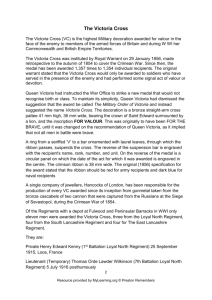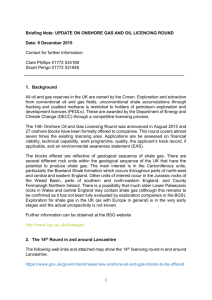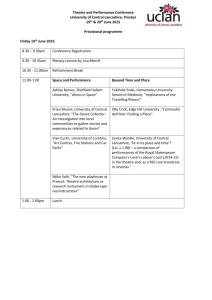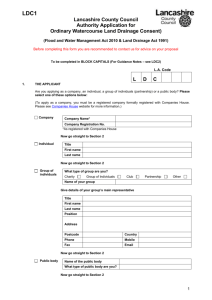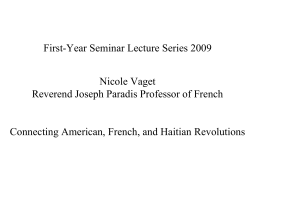View on screen
advertisement
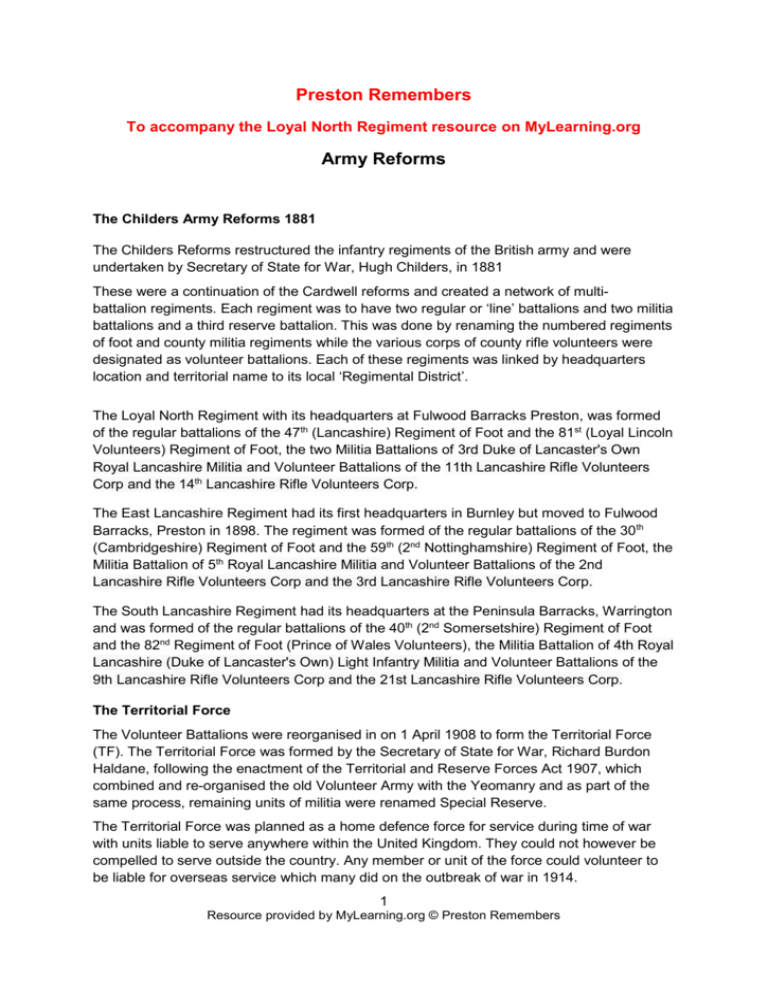
Preston Remembers To accompany the Loyal North Regiment resource on MyLearning.org Army Reforms The Childers Army Reforms 1881 The Childers Reforms restructured the infantry regiments of the British army and were undertaken by Secretary of State for War, Hugh Childers, in 1881 These were a continuation of the Cardwell reforms and created a network of multibattalion regiments. Each regiment was to have two regular or ‘line’ battalions and two militia battalions and a third reserve battalion. This was done by renaming the numbered regiments of foot and county militia regiments while the various corps of county rifle volunteers were designated as volunteer battalions. Each of these regiments was linked by headquarters location and territorial name to its local ‘Regimental District’. The Loyal North Regiment with its headquarters at Fulwood Barracks Preston, was formed of the regular battalions of the 47th (Lancashire) Regiment of Foot and the 81st (Loyal Lincoln Volunteers) Regiment of Foot, the two Militia Battalions of 3rd Duke of Lancaster's Own Royal Lancashire Militia and Volunteer Battalions of the 11th Lancashire Rifle Volunteers Corp and the 14th Lancashire Rifle Volunteers Corp. The East Lancashire Regiment had its first headquarters in Burnley but moved to Fulwood Barracks, Preston in 1898. The regiment was formed of the regular battalions of the 30th (Cambridgeshire) Regiment of Foot and the 59th (2nd Nottinghamshire) Regiment of Foot, the Militia Battalion of 5th Royal Lancashire Militia and Volunteer Battalions of the 2nd Lancashire Rifle Volunteers Corp and the 3rd Lancashire Rifle Volunteers Corp. The South Lancashire Regiment had its headquarters at the Peninsula Barracks, Warrington and was formed of the regular battalions of the 40th (2nd Somersetshire) Regiment of Foot and the 82nd Regiment of Foot (Prince of Wales Volunteers), the Militia Battalion of 4th Royal Lancashire (Duke of Lancaster's Own) Light Infantry Militia and Volunteer Battalions of the 9th Lancashire Rifle Volunteers Corp and the 21st Lancashire Rifle Volunteers Corp. The Territorial Force The Volunteer Battalions were reorganised in on 1 April 1908 to form the Territorial Force (TF). The Territorial Force was formed by the Secretary of State for War, Richard Burdon Haldane, following the enactment of the Territorial and Reserve Forces Act 1907, which combined and re-organised the old Volunteer Army with the Yeomanry and as part of the same process, remaining units of militia were renamed Special Reserve. The Territorial Force was planned as a home defence force for service during time of war with units liable to serve anywhere within the United Kingdom. They could not however be compelled to serve outside the country. Any member or unit of the force could volunteer to be liable for overseas service which many did on the outbreak of war in 1914. 1 Resource provided by MyLearning.org © Preston Remembers In this reorganisation the 1st Volunteer Battalion Loyal North Regiment became the 4th battalion The Loyal North Lancashire Regiment while the 2nd Volunteer Battalion Loyal North Regiment became the 5th Battalion The Loyal North Lancashire Regiment. The same process happened with the East Lancashire Regiment and the South Lancashire Regiment 1/4th and 1/5th Battalion, Loyal North Lancashire Regiment were part of the 164th (North Lancashire) Brigade, which was assigned to the 55th (West Lancashire) Infantry Division. 1/4th and 1/5th Battalion, South Lancashire Regiment were part of the 166th (North Lancashire) Brigade, which was assigned to the 55th (West Lancashire) Infantry Division. 1/4th and 1/5th Battalion, East Lancashire Regiment were part of the 126th East Lancashire Brigade, which was assigned to the East Lancashire Division which was renamed the 42nd (East Lancashire) Division in May 1915. 2 Resource provided by MyLearning.org © Preston Remembers

